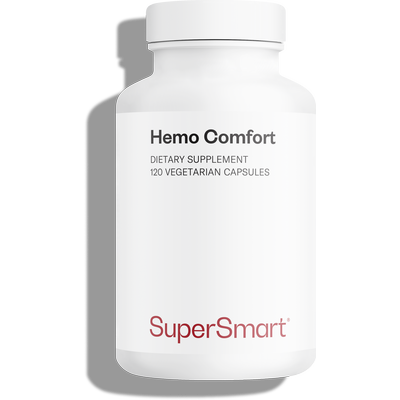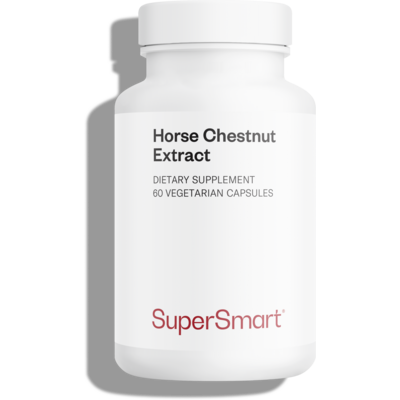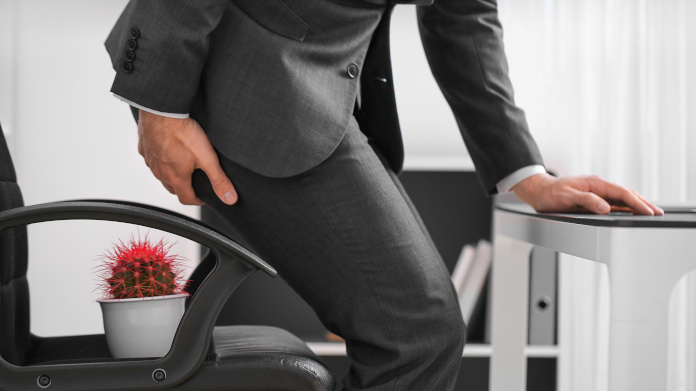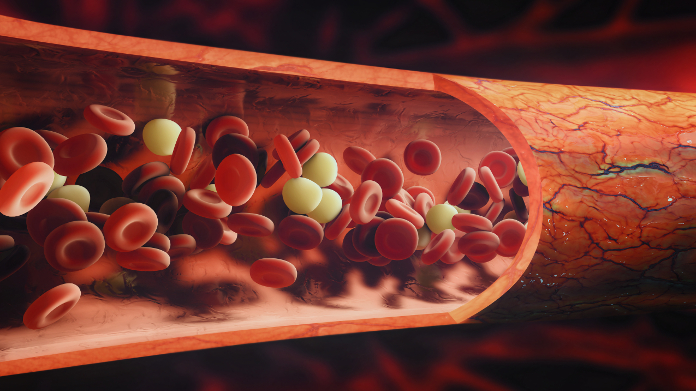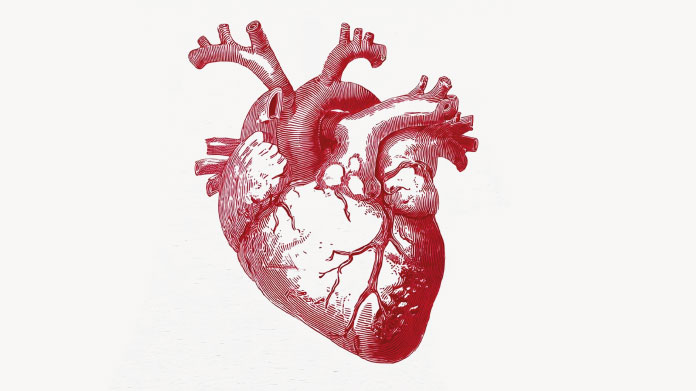Hemorrhoids – which foods should you avoid and which should you prioritise to obtain relief?
Pain, burning, or itching around the anus? If you’re prone to hemorrhoidal attacks, read on for a list of the foods to avoid and prioritise, as well as some tips for reducing the chances of them coming back.

Hemorrhoids and hemorrhoidal attacks : multiple causes
Hemorrhoids (also known as ‘piles’) are enlarged blood vessels either under the skin around the anus (external hemorrhoids) or inside the anal canal, under the mucous membrane (internal hemorrhoids).
What is commonly referred to as “having hemorrhoids” is therefore hemorrhoidal disease: irritation and swelling of these blood vessels.
The most common symptoms are itching, burning and/or pain in or around the anus. Hemorrhoidal attacks can cause severe pain and bleeding (1).
Causes of hemorrhoids
The main causes of inflammation of these blood vessels include:
- pregnancy, childbirth and the post-partum period, which are all conducive to the onset of hemorrhoids in women;
- aging, due to the loss of muscle tone in the perineum and anus;
- venous insufficiency, as stagnation of blood in the legs causes hemorrhoidal veins to swell;
- constipation, as straining to empty the bowels causes damage to blood vessels in this area;
- a sedentary lifestyle and excess weight, as well as lifting heavy items without motor control of the perineum;
- and finally, consuming alcohol and spicy food.
’No-go’ foods if you have hemorrhoids
Analysis of the causes of hemorrhoidal disease makes it easy to identify which foods to avoid in order to obtain relief (3):
- refined starches which encourage constipation: white rice, pasta and bread, as well as potatoes;
- spicy foods: chilli, curry, black pepper, mustard, etc, which promote irritation of the anus during defecation;
- alcohol and caffeine, which encourage dehydration, potentially causing hard stools that are difficult to pass, which aggravates hemorrhoids;
- fatty, salty and sugary foods in general: an excessively rich diet, with a high proportion of processed foods, unhealthy fats and added sugars, impairs intestinal transit and stool quality.
Priority foods for combatting hemorrhoidal episodes
In contrast, there are a number of foods to focus on in order to maintain the health of the blood vessels in this region:
- water: staying well-hydrated helps fight constipation. You need to drink at least 30 ml of water per kilo of bodyweight a day. For example, if you weight 70kg, you should drink at least 2.1 liters of water a day;
- high-fibre foods: fibre encourages transit by stimulating intestinal motility. Increase your intake of high-fibre fresh fruits and vegetables, but don’t go overboard to the point of causing diarrhea, as that too can increase irritation of hemorrhoids;
- whole grains and pulses: they increase frequency of bowel movements and improve stool consistency.
In short, eating a healthy, balanced diet is an effective way of fighting hemorrhoidal episodes.
Some tips to help prevent the discomfort of hemorrhoids
Finally, here are some excellent natural tips if you regularly suffer from inflamed hemorrhoids.
As a sedentary lifestyle and excess weight are common causes of hemorrhoids, it’s advisable to follow a weight-loss diet, as well as - and especially – to engage in regular exercise, even at a moderate level: walking, swimming, etc. (4).
Exercises to strengthen the pelvic floor (Kegels) can also be particularly effective at improving muscle tone and motor control of the anus.
Proper intimate hygiene of the anal area is also important for reducing hemorrhoidal pain. Gently cleanse the area using moist, unscented wipes, to reduce irritation.
Sitz baths do not really reduce hemorrhoid problems, but they can ease the discomfort they cause, which can be very helpful in an acute hemorrhoidal attack. In the case of inflamed hemorrhoids, sit in a sitz bath containing lukewarm water (around 40°C) for 10-15 minutes, 3 or 4 times a day.
Horse chestnut, meanwhile, has been used for thousands of years as a venotonic. And for good reason, as it contains aescin which reduces the permeability of the vein wall and maintains its tone, thus facilitating the return of blood to the heart, especially in superficial blood capillaries. That’s why horse chestnut supplements (such as Horse Chestnut Extract) are very often recommended for combatting hemorrhoids (5).
There are also synergistic formulations developed specifically to fight the discomfort of hemorrhoids, in which horse chestnut extract is combined with other active ingredients (one such example is Hemo Comfort).
It goes without saying that if you suffer a painful hemorrhoidal attack lasting more than 48 hours, consider consulting a doctor for advice on how to treat your hemorrhoids.
SuperSmart ADVICE
References
- SARDINHA, T. Cristina et CORMAN, Marvin L. Hemorrhoids. Surgical Clinics, 2002, vol. 82, no 6, p. 1153-1167.
- GAMI, Bharat, et al.Hemorrhoids-a common ailment among adults, causes & treatment: a review. Int J Pharm Pharm Sci, 2011, vol. 3, no Suppl 5, p. 5-13.
- CHUGH, Anmol, SINGH, Rajdeep, et AGARWAL, P. N. Management of hemorrhoids. Indian J Clinic Pract, 2014, vol. 25, no 6, p. 577-80.
- DE MARCO, Stefania et TISO, Domenico. Lifestyle and risk factors in hemorrhoidal disease. Frontiers in Surgery, 2021, vol. 8, p. 729166.
- HIPPOCASTANUM, Hemoroidal Hastalığın Tedavisinde Aesculus. Aesculus Hippocastanum (Aescin, Horse Chestnut) in the Management of Hemorrhoidal Disease. Turk J Colorectal Dis, 2018, vol. 28, p. 54-57.
Keywords
13 Days
A Product worth waiting for when not…
A Product worth waiting for when not available and then arriving as a surprise!
DOMINIC
15 Days
On time shipping
On time shipping
GEORGE Verne
16 Days
Ordering was easy and the product was…
Ordering was easy and the product was delivered with no problems. Appreciated that I was notified when it would arrive. Thanks!
MascarC
22 Days
Great customer service - responsive …
I ordered from them and my item was unavailable for sometime. I was super happy when they reactivated my order and shipped my item which arrived very quickly. Great customer service.
Ruth Rueter
23 Days
Super fast shipping
Super fast shipping
Donald Borling
26 Days
Reputable companysearch and the number of…
The research and the number of selection of products.
NAKHJAVAN Shervin
39 Days
The Anti Aromatase is a great product
The Anti Aromatase is a great product. You just need to have constant inventory. Recently this product has been out of stock.
GEORGE Verne
41 Days
Great help on chat
Great help on chat. Knowledgeable and friendly.
Jason Argos
44 Days
Customer service was fast and friendly.
Customer service helped to stop the transaction process of the subscription. I appreciated that.
Greenie
44 Days
I order here due to the high quality of…
I order here due to the high quality of the products and the quick delivery of items - thank you
Barbara J
46 Days
SuperSmart's Eye Pressure supplements: highly recommended!
I purchase SuperSmart's Eye Pressure supplements regularly for over 5 years, and gotta say they are truly a wonderful product for my Glaucoma. Highly recommended if you have eye pain from your Glaucoma.
D. Martinez
50 Days
Quick service
Quick service
MONELL
51 Days
Speedy service.
Speedy service.
ROSENTHAL Marvin
55 Days
Clear website- Efficient
Clear website. Excellent search engine and fast delivery!
Mohamad Hussein
57 Days
They have great products.
They have great products.
Vickie

